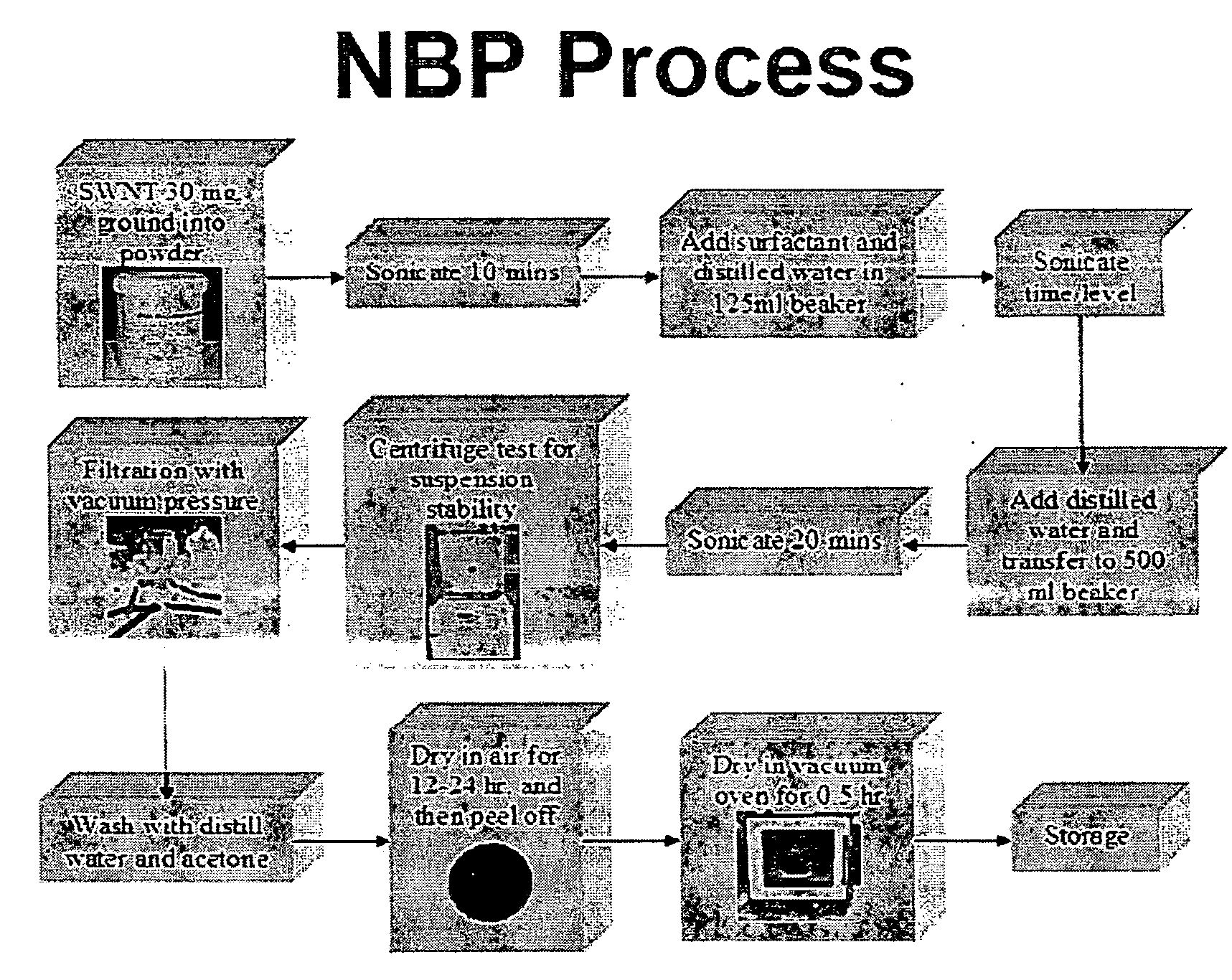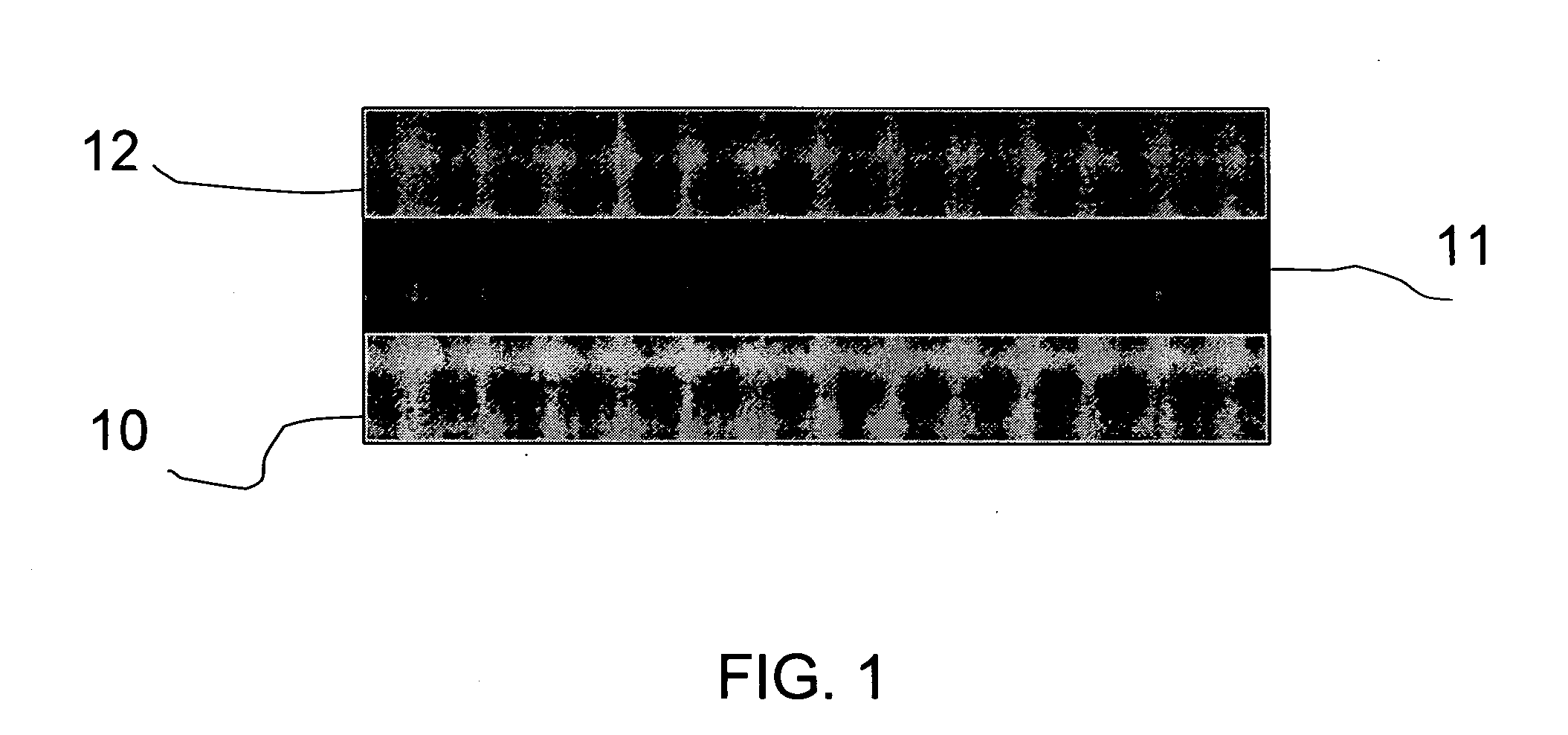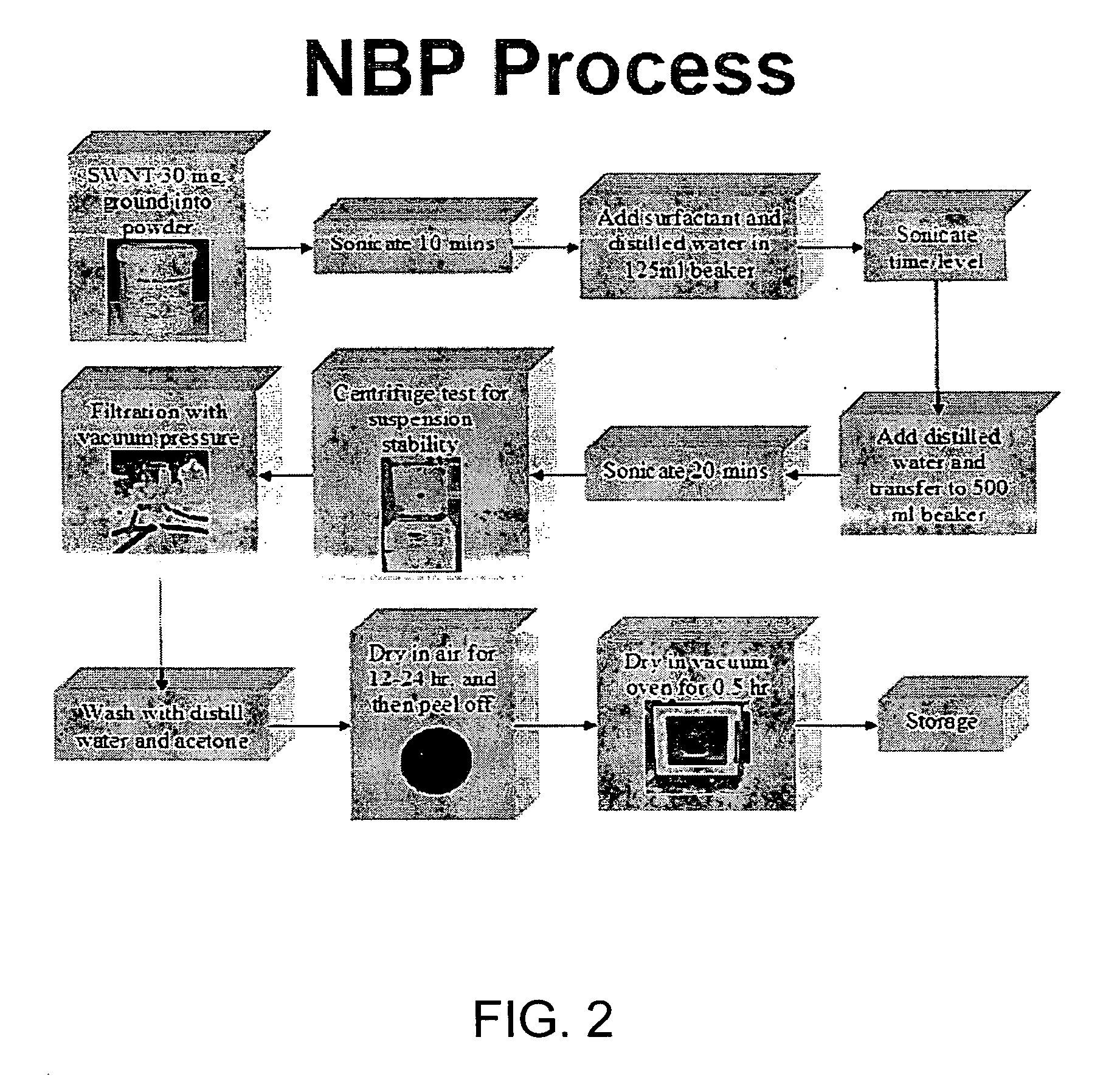Open air manufacturing process for producing biologically optimized photovoltaic cells
a photovoltaic cell, open-air technology, applied in the direction of sustainable manufacturing/processing, final product manufacturing, nanoinformatics, etc., can solve the problems of limited efficiency, low efficiency to be expected, and relatively inefficient, and achieve the highest achievable photoelectric effect, increase photon absorption and exciton generation, and achieve the effect of high photoelectric
- Summary
- Abstract
- Description
- Claims
- Application Information
AI Technical Summary
Benefits of technology
Problems solved by technology
Method used
Image
Examples
Embodiment Construction
[0021]Reference is now made to FIG. 1, which is a schematic of the biologically optimized photovoltaic cell of the invention. In this cell, there can be seen a layer of a metal cathode 10, which is preferably aluminum. The buckywood composite layer 11 is disposed between the metal cathode layer and clear film anode 12, which is preferably indium tin oxide (ITO).
[0022]The entire range of the electromagnetic spectrum or radiant energies or wave frequencies from the longest to the shortest wavelengths are as follows:
[0023]Gamma, x-rays, UV, visible, IR, microwave, and RF.
[0024]Solar cells are generally spectrum specific in that they are generally designed to work within the UV, visible and IR range so as to match the absorption spectrum of the active element of the device to the solar spectrum range. The composite layer 11 disposed between the anode and metal cathode of the cell of the invention may be the buckywood composite and / or opti-glu.
[0025]Buckywood composites were formed from ...
PUM
| Property | Measurement | Unit |
|---|---|---|
| weight | aaaaa | aaaaa |
| energy | aaaaa | aaaaa |
| photocurrent | aaaaa | aaaaa |
Abstract
Description
Claims
Application Information
 Login to View More
Login to View More - R&D
- Intellectual Property
- Life Sciences
- Materials
- Tech Scout
- Unparalleled Data Quality
- Higher Quality Content
- 60% Fewer Hallucinations
Browse by: Latest US Patents, China's latest patents, Technical Efficacy Thesaurus, Application Domain, Technology Topic, Popular Technical Reports.
© 2025 PatSnap. All rights reserved.Legal|Privacy policy|Modern Slavery Act Transparency Statement|Sitemap|About US| Contact US: help@patsnap.com



